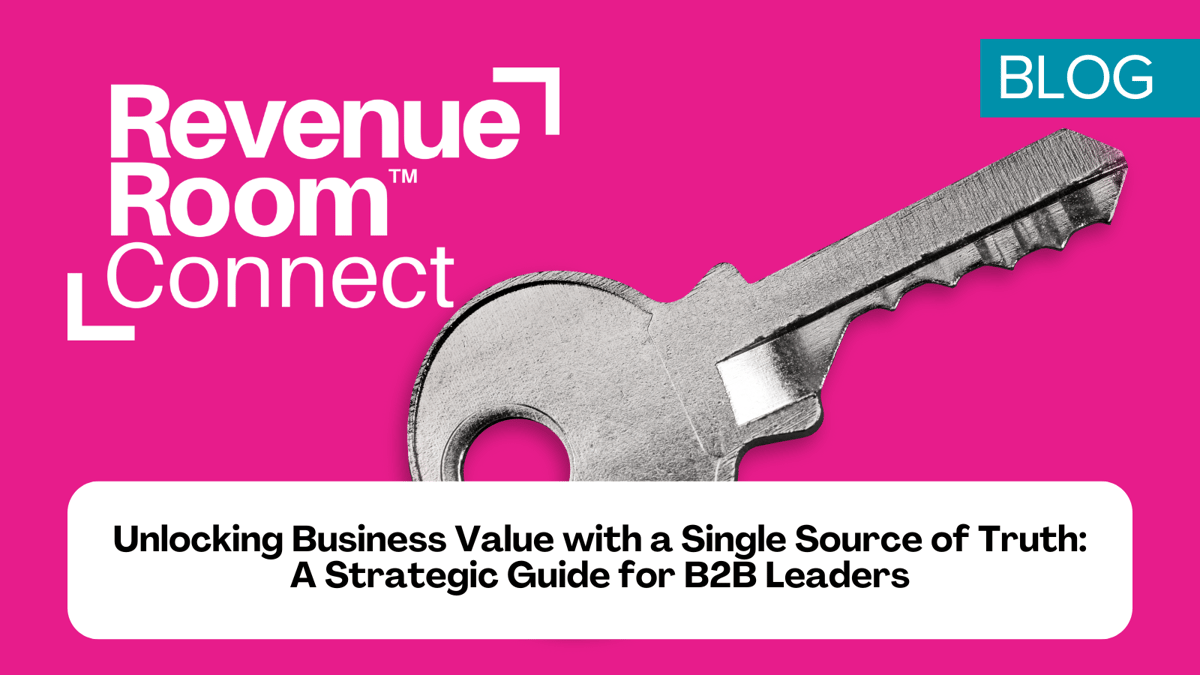Unlocking Business Value with a Single Source of Truth: A Strategic Guide for B2B Leaders
Executive Summary
In today's complex business environment, B2B organizations are drowning in data but starving for insights. While 94% of businesses say data is essential to their growth, only 44% are successfully creating value from it. A Single Source of Truth (SSOT) can bridge this gap, transforming how organizations leverage their data assets for competitive advantage. This guide explores why SSOT matters now more than ever, what makes it challenging, and how to implement it successfully.
Why SSOT Matters Now
The business case for SSOT has never been stronger:
- Rising Data Complexity: B2B organizations now manage an average of 110 different data sources, up 38% since 2021
- Revenue Impact: Data-driven organizations see 30% higher EBITDA margins than their peers
- Decision Speed: Companies with SSOT reduce decision-making time by 69% on average
- Customer Experience: 83% of organizations report improved customer satisfaction after implementing SSOT
For media and events organizations specifically, SSOT can transform:
- Real-time visibility into cross-channel performance
- Accurate pipeline forecasting across multiple revenue streams
- Customer behavior insights across digital and in-person touchpoints
- Performance tracking across diverse business units
The Hidden Complexities of SSOT
1. Technical Challenges
- Data Integration: Most organizations have 15+ critical systems containing revenue data
- Data Quality: On average, 47% of B2B data requires significant cleansing
- System Architecture: Balancing real-time needs with historical analysis
- Security & Compliance: Managing access while maintaining data protection
2. Organizational Challenges
- Metric Alignment: Getting consensus on KPI definitions across departments
- Process Changes: Adapting workflows to support data quality
- Skills Gap: Building data literacy across teams
- Change Management: Shifting from intuition to data-driven decisions
3. Strategic Challenges
- Investment Prioritization: Balancing quick wins with long-term needs
- Resource Allocation: Managing competing demands for data resources
- ROI Measurement: Quantifying the impact of better data
- Scaling: Growing the solution alongside the business
Common Pitfalls to Avoid
1. The "Big Bang" Approach
Problem: Trying to solve all data challenges at once Solution: Start with high-impact, contained use cases that demonstrate value
2. The Technology Trap
Problem: Viewing SSOT as purely a technology project Solution: Focus on business outcomes first, technology second
3. The Governance Gap
Problem: Underinvesting in data governance and quality Solution: Establish clear ownership and processes for data management
4. The Culture Clash
Problem: Failing to address resistance to data-driven approaches Solution: Lead by example and invest in change management
Implementation Blueprint
Phase 1: Foundation (Months 1-3)
- Assess current state and pain points
- Define success metrics and ROI targets
- Build cross-functional steering committee
- Select initial high-impact use cases
Phase 2: Pilot (Months 4-6)
- Implement solutions for selected use cases
- Establish data governance framework
- Develop training and adoption program
- Measure and communicate early wins
Phase 3: Scale (Months 7-12)
- Expand to additional use cases
- Refine processes based on learnings
- Build internal capabilities
Keys to Success
- Executive Sponsorship: Active C-suite involvement in steering and adoption
- Clear Ownership: Dedicated team with business and technical expertise
- Iterative Approach: Regular releases that deliver incremental value
- User Focus: Solutions designed around actual user needs and workflows
- Continuous Improvement: Regular assessment and optimization of processes
Measuring Success
Track these key metrics to gauge SSOT effectiveness:
- Time saved in data gathering and reconciliation
- Improvement in forecast accuracy
- Reduction in reporting errors
- Revenue impact of data-driven decisions
Next Steps
- Assess Your Readiness: Evaluate your organization's data maturity
- Build Your Business Case: Quantify potential value and required investment
- Start Small: Choose a pilot project with clear ROI
- Learn and Adapt: Use early learnings to refine your approach
_____________________________________________________________
Ready to Join the Movement Transforming Revenue Leadership? Unlock access to a powerful network of C-Suite leaders committed to scaling high-performing, data-driven organizations. Revenue Room™ Connect offers complimentary memberships for qualified executives—featuring peer cohorts, premium content, executive education, and exclusive events.
👉 Apply now for a complimentary membership and take your place at the table where bold ideas, innovation, and enterprise value converge.




